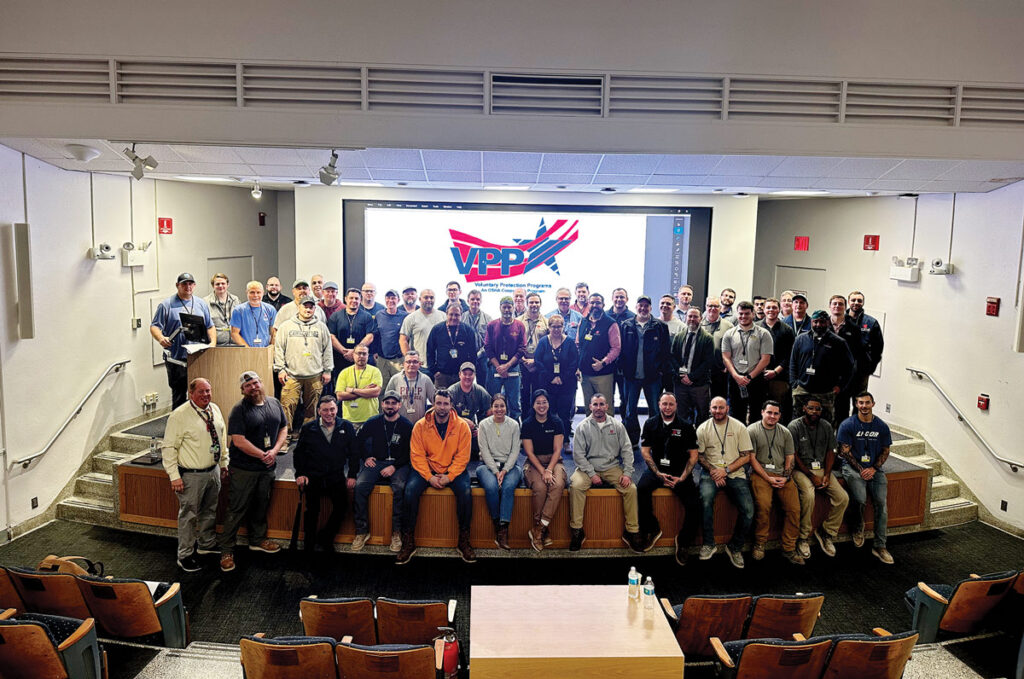VOLUNTARY PROTECTION PROGRAM
A safe jobsite is a baseline commitment for any construction jobsite. But when a project team goes above and beyond, how can they show their workers and the rest of the industry that they excel when it comes to keeping their site safe?
The answer is the Occupational Safety and Health Administration’s (OSHA) prestigious Voluntary Protection Program (VPP). Participating in this rigorous, esteemed program allows project teams to certify that they meet OSHA’s highest standards for workplace safety.
WORKING WITH CLIENTS AND TRADE PARTNERS
LFD has maintained VPP status at:

THE VPP EVALUATION PROCESS
Embarking on the journey to VPP participation begins with inviting OSHA to conduct a comprehensive evaluation of a jobsite’s safety program.
Over several days, OSHA meticulously reviews every facet of the site’s safety measures, including safety plans, permits, toolbox talks and other critical documentation.
The evaluation team, led by an OSHA representative, includes Special Government Employees (SGEs). These SGEs, volunteers from other OSHA VPP-certified jobsites who assist in the evaluation process, are pivotal in providing a thorough assessment. Their hands-on experience with VPP-certified sites ensures a nuanced evaluation process.
A prime example of VPP success is LF Driscoll. The LFD team has been engaged in VPP on several jobsites and demonstrated a longtime passion for safety. STO Building Group’s Safety 360° philosophy was actually
born out of LFD’s mission to promote continuous improvement in safety
practices—and is now embraced by all STO Building Group builders.
“The VPP evaluation team is looking for evidence of the safety program being alive and well, not just written down in a book somewhere,” says LF Driscoll senior safety director Brendon Saguil. “That’s exactly how we operate at LF Driscoll—staying vigilant and evolving our approach to safety year after year.”
KEY ELEMENTS OF THE VPP EVALUATION
OSHA’s evaluation focuses on four essential elements for any successful safety program:
- Management Commitment and Employee Involvement.
Ensuring that both management and employees are actively
engaged in maintaining safety standards. - Worksite Analysis. Conducting thorough and ongoing analysis
of the worksite to identify and mitigate potential hazards. - Hazard Prevention and Control. Implementing effective measures to prevent and control workplace hazards.
- Safety and Health Training. Providing ongoing training to
ensure that all employees are knowledgeable about safety protocols and procedures.
The evaluation seeks evidence of these elements in both the site’s documentation and its daily operations, conducting informal interviews with workers and formal interviews with management and owner representatives.
OUTCOMES OF A VPP EVALUATION
At the end of the evaluation, the team recommends to OSHA’s area director whether the jobsite qualifies for VPP status. The pinnacle of this program is the
VPP Star designation, signifying exceptional adherence to safety standards and self-sufficiency according to OSHA. Two of LFD’s projects—Hospital of the University of Pennsylvania (HUP) and Children’s Hospital of Philadelphia (CHOP)—were recently recertified as VPP Star jobsites.
“By achieving VPP Star status, we are committed to continuously improving safety and combating complacency,” says Stephen Kanter, safety manager at LF Driscoll. “LF Driscoll’s commitment to safety through initiatives like Safety 360° showcases how a VPP certified site can influence safety practices throughout
an organization.”